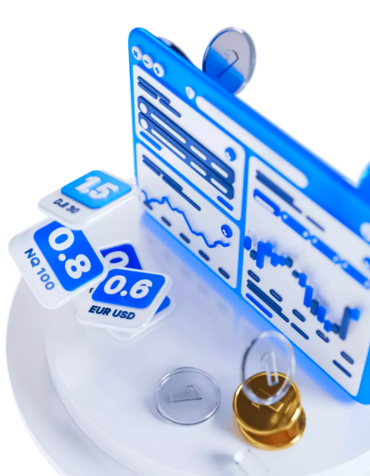We round up the best brokers that we believe offer best value for forex traders.





Trading the PENCOP forex pair involves buying or selling it in the foreign exchange (forex) market. Here are the basic steps to trade PENCOP:
To trade any forex pair, including PENCOP, you'll need to open an account with a reputable forex broker. Ensure that the broker offers access to this specific PENCOP pair.
Deposit funds into your forex trading account. The amount you deposit will determine the size of your trading positions.
Before making any trades, perform a thorough analysis of the PENCOP pair. This analysis typically involves fundamental analysis (economic data, interest rates, geopolitical events) and technical analysis (price charts, indicators) to determine your trading strategy.
Most brokers offer trading platforms that allow you to execute trades. Familiarize yourself with the platform's interface and tools.
Choose whether you want to buy (long) or sell (short) the PENCOP pair based on your analysis. Enter the trade order on your trading platform, specifying the amount (lot size) you wish to trade.
Executes the trade immediately at the current market price.
Sets a specific price at which you want your trade to be executed.
Sets a price at which your trade will be triggered if the market moves in a certain direction.
To manage risk, consider setting stop-loss orders to limit potential losses and take-profit orders to lock in profits at a certain price level.
Once your trade is executed, monitor the PENCOP pair's price movement. Keep an eye on news and events that may impact the exchange rate.
When you achieve your trading objectives, either manually close the trade or wait for your predetermined take-profit or stop-loss levels to be reached.
After closing your trade, assess the outcome. Review your trading strategy and learn from both successful and unsuccessful trades to improve your skills.
Always practice proper risk management. Never risk more than you can afford to lose, and consider using leverage cautiously if available.
First up, we have the trend-following strategy. This one is all about identifying and taking advantage of market trends. Traders analyze price charts and look for things like moving averages or trend lines to figure out which direction the market is going. The idea is to buy when prices are going up and sell when they're going down. Of course, risk management is important here too, so setting stop-loss orders can help protect against big losses.
Next, we have the breakout strategy. This one focuses on finding key levels of support or resistance in a currency pair's price movement. When prices break above a resistance level or below a support level, it suggests that there could be a strong move in that direction. Traders using this strategy try to get into positions as soon as the breakout happens while also managing risk with stop-loss orders placed just outside of the breakout level.
Lastly, we have the range trading strategy. This one takes advantage of times when currency pairs trade within specific levels without showing clear trends. Traders who use this approach look for opportunities to buy near support levels and sell near resistance levels over and over again until those boundaries are broken significantly enough for new trends to emerge – at which point they may switch strategies accordingly.